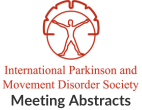Genome-wide bioinformatic analysis of Parkinson’s disease: A focus on neuronal health maintenance
Objective: To scan the human genome for genes involved in neuronal health maintenance in Parkinson's disease (PD). Background: An enormous number of genes and pathways…Study on association between physical and genetics role in essential tremor – A case control study
Objective: To elucidate the relationships between physical and genetics parameters in essential tremor patients and controls. Tremor is an involuntary, rhythmic shaking of any part…Intracerebroventricular D-galactose injection provokes motor coordination impairment and cerebellar damage in Wistar rats
Objective: The present study was performed to investigate the effect of galactose (GAL) (at concentration in the brain, found in classical galactosemia) on motor coordination…Characterisation of the A30P mutation in alpha-synuclein gene in patient-derived cellular model of Parkinson’s disease
Objective: In this study, we aim to generate and characterise patient-derived midbrain dopaminergic neurons (mDANs) of the A30P Parkinson's disease (PD) familial case. Our goal…Identification of Usp8 as a toxicity modifying deubiquitinase for α-synuclein
Objective: To study whether ubiquitination in Lewy bodies is directly relevant to α-synuclein turnover and Parkinson's pathogenesis. Background: In Parkinson's disease, misfolded α-synuclein accumulates, often…Cerebellar atrophy in Parkinson’s disease and its implication for network connectivity
Objective: To determine the effect of cerebellar atrophy on resting-state network abnormalities in individuals with Parkinson's disease. Background: In Parkinson's disease, the cerebellum is a…Gait impairment is more than a motor symptom in Parkinson’s disease
Objective: To examine the relationship of gait impairment of Parkinson's disease (PD) patients with different clinical factors including motor function, non-motor function and cognitive function.…Urate and homocysteine: Changes in motor and cognitive symptoms in newly diagnosed Parkinson’s disease
Objective: 1) To determine serum urate and homocysteine concentration at baseline, 18 and 36 months in control and PD participants. 2) To determine if urate…Cell-surface expression of dopamine transporter facilitates the uptake of α-synuclein
Objective: We determined whether increased expression of DAT have an impact on the uptake of α-synuclein (αS). Background: The endocytosis of dopamine transporter (DAT) controls…Role of dopamine and GABA during subthalamic and pallidal deep brain stimulation: Evidence of dopamine release during subthalamic Deep Brain Stimulation
Objective: We recorded the single-unit activity of striatal cholinergic interneurons of healthy monkeys during high-frequency stimulation (HFS) of the subthalamic nucleus (STN) and globus pallidus…
- « Previous Page
- 1
- …
- 73
- 74
- 75
- 76
- 77
- …
- 207
- Next Page »
